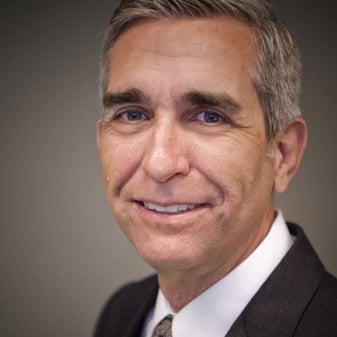Principal Spotlight: Don Pender
Thu, Aug 20, 2015 Carina Calhoun Sustainable Design, K-12 Schools, Don Pender, LPA50
 As part of our 50-year anniversary, we'll meet with each of the firm Principals and get their take on LPA, current projects and of course, sustainable design.
As part of our 50-year anniversary, we'll meet with each of the firm Principals and get their take on LPA, current projects and of course, sustainable design.
Don Pender, AIA / CEFP / LEED AP BD+C
Principal, Education Group / K-12
LPA Irvine
Q: How long have you worked at LPA?
A: My first experience with LPA was from 1987 to 1991. I returned to LPA in 2000 after having a practice in Texas for several years, and have been here happily ever since.
Q: What do you love most about your job?
A: Working with so many bright, capable people from so many different walks of life, from every discipline that it takes to shape a great project. Our integrated design practice structure and our size allows everyone to find what they are truly best at, and then organize them into a team that brings an incredible depth of talent and service to our clients. No matter the problem we face, I find that we always can find the answer within the LPA team. I love the part I get to play in orchestrating all these different talents and roles for the benefit of a client.
Q: What does a day in the life of Don Pender look like?
A: No two days ever seem to be alike. One day I might be working with a community outreach group to help them develop their vision of the future for a K-12 school project. On another day, I might be on a construction site with one of our Project Managers, our engineering staff, our client and contractors looking at construction progress on a new project. On another day I might be planning the process to bring a project to fruition from start to finish. I also have had a wonderful opportunity this year to engage with LPA’s talented staff in San Antonio, Texas and enjoy a bit of the rich cultural heritage there.
Q: What project are you working on this minute? What does it entail?
A: This morning I started the day working on the final touches to a process we are designing to develop a Long Range Facilities Master Plan for a large, urban public school district. Putting this process together is a bit like developing a game plan for a football game. We consider where the district wants to go in terms of its strategic vision, and then tailor a customized process that will fit this particular community taking them step by step through a process to define their own future with regard to the kind of facilities that will support their long term educational goals. This will be a unique opportunity to shape the lives of a very diverse population of students and their families by engaging them, along with their teachers and other members of the community.
Q: What do you love most about sustainable design?
A: Excellence in design has always been sustainable. To me, sustainable design is Authentic, because it is shaped by an understanding of the realities that affect it such as its geography, its culture, its climate, availability of materials, the characteristics of the site and its surroundings. Relevant, because it addresses the real needs of the community of people who will use it now and long into the future. Unique, because those realities that shape a project are unique for every project. Affordable, because the process acknowledges what the community of users, or the client can truly afford, in terms of both the first cost of the building, as well as the future operational cost. And it’s inspirational because sustainable design reflects the highest aspirations of the people who will use the building.
Q: What are your thoughts on LPA’s 50th anniversary this year?
A: Being part of a firm that has been successful for half a century implies to me a sense of responsibility to the past and to the future. There is a continuity of values here at LPA that have been consistently honored over the last 50 years and we want to continue for the next 50 years. I feel that is a big part of the promise we offer to our clients.
Q: Aside from your passion for design, what other interests/hobbies do you enjoy?
A: When I am not at LPA, I like to ride bicycles, fly fish for trout in the Eastern Sierras and to paint with oils.
